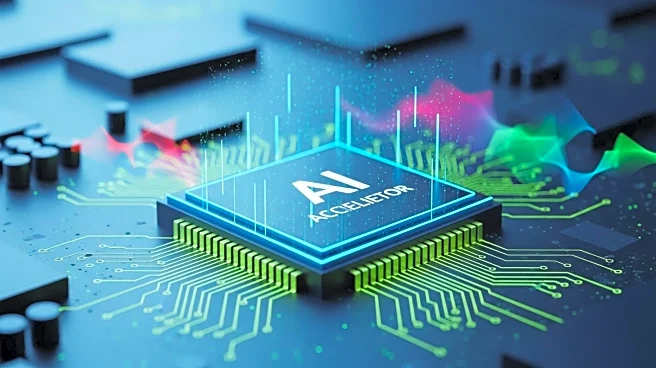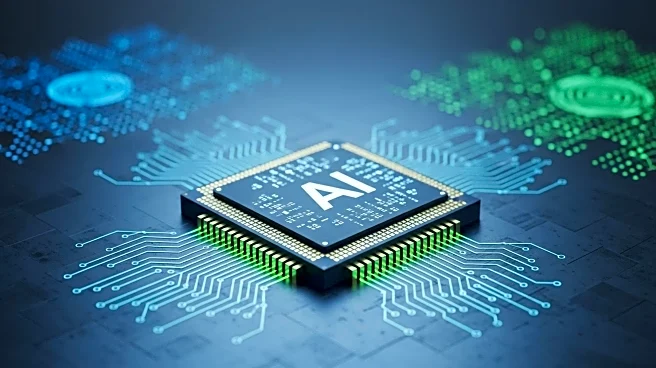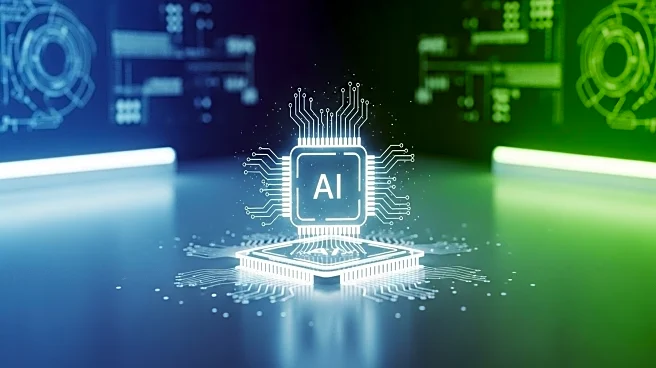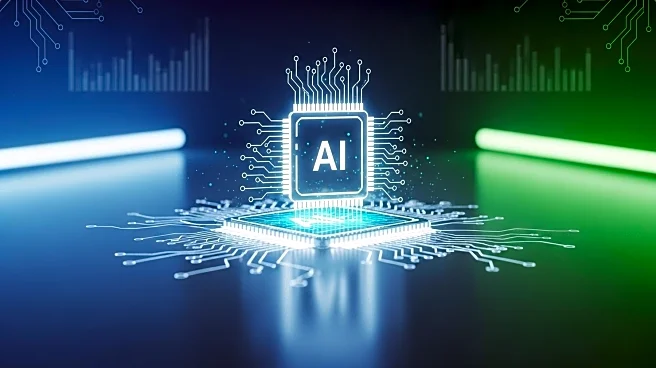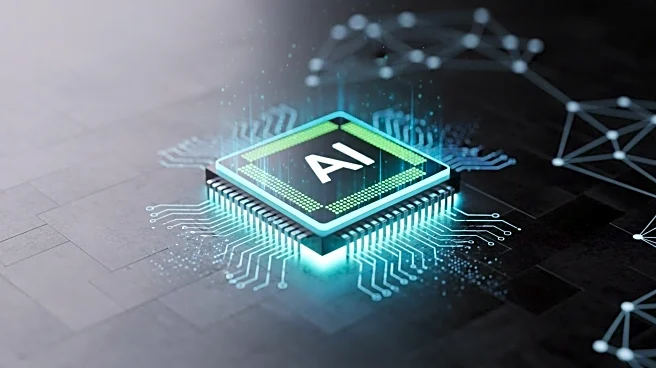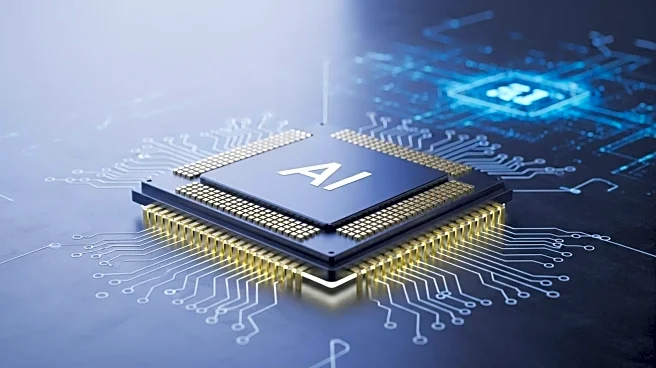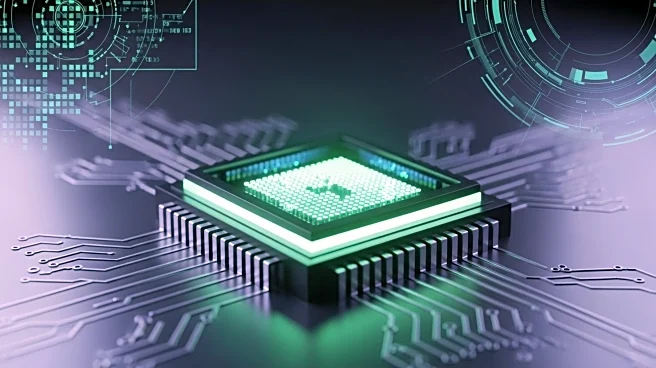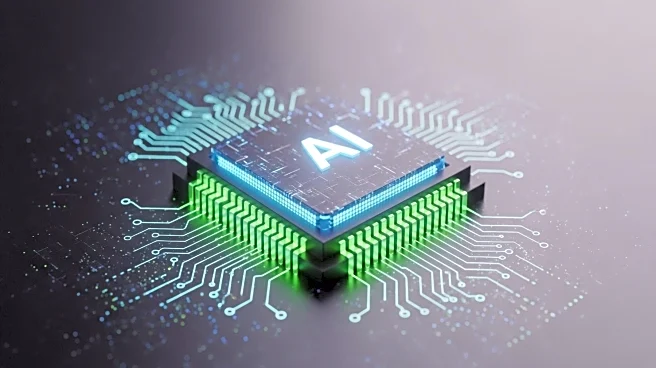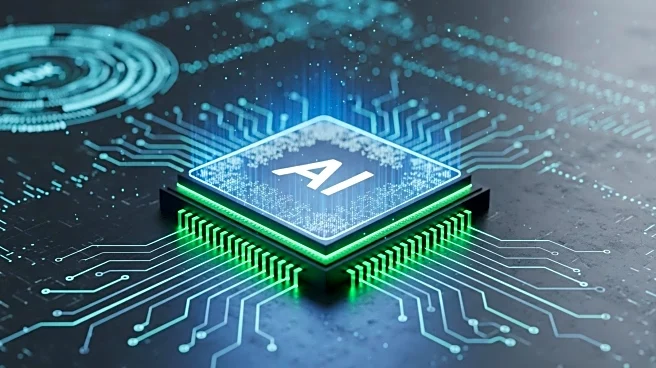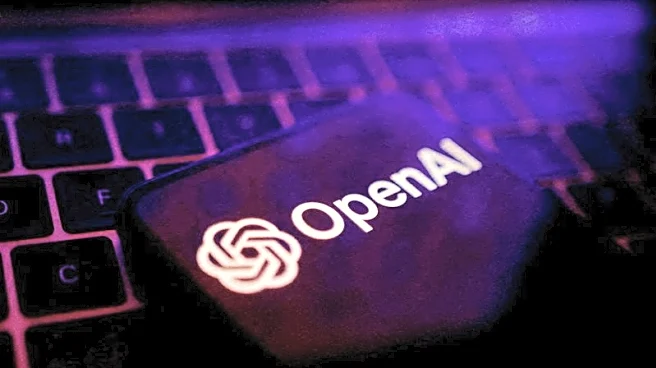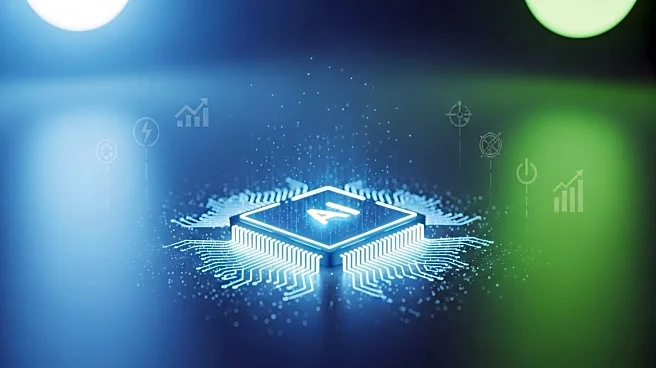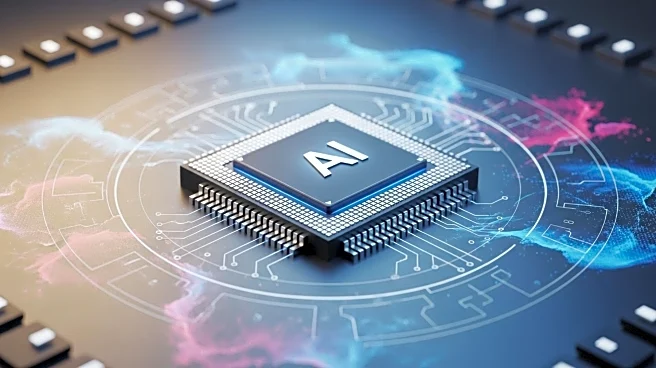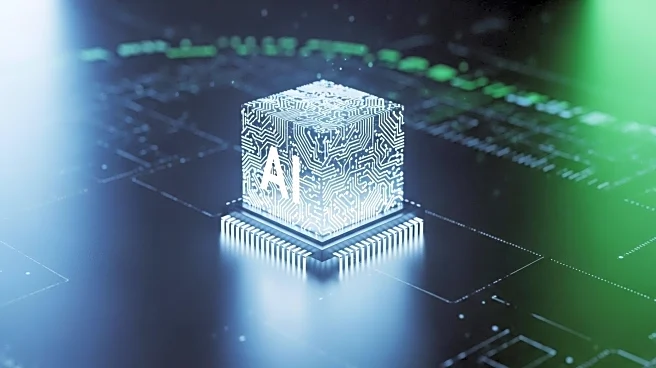What is the story about?
What's Happening?
OpenAI has announced a strategic partnership with Broadcom to co-develop custom AI accelerators, marking a significant shift in its business strategy. This move positions OpenAI to compete directly with major hyperscalers by controlling more of its infrastructure. The partnership involves designing racks of custom silicon optimized for OpenAI's models, providing deeper control over its technology stack. This development is part of OpenAI's broader strategy to establish a comprehensive AI ecosystem, similar to Apple's approach with smartphones and Microsoft's with PCs. The collaboration with Broadcom is expected to enhance OpenAI's capabilities in training frontier models and managing infrastructure, distribution, and developer ecosystems.
Why It's Important?
The partnership between OpenAI and Broadcom is crucial as it signifies OpenAI's ambition to dominate the AI infrastructure market. By developing custom AI accelerators, OpenAI aims to gain a competitive edge over rivals like Nvidia and AMD, whose chips are designed for broader commercial use. This move could lead to significant efficiency gains, better performance, and cost reductions for OpenAI's models. The expansion into consumer hardware, including potential AI-native devices, indicates OpenAI's intent to control the user experience and redefine interactions with AI. The strategic focus on infrastructure and hardware could reshape the AI industry, positioning OpenAI as a leader in AI technology and infrastructure.
What's Next?
OpenAI plans to deploy the custom AI accelerators developed with Broadcom by late 2026. This deployment is part of a larger campaign called Stargate, which aims to provide the physical backbone for AI. OpenAI has also secured major deals with Nvidia and AMD to expand its infrastructure capabilities. The company is expected to continue its aggressive expansion strategy, potentially influencing market dynamics and increasing its market cap. As OpenAI builds its infrastructure, it may face challenges from established hyperscalers like Microsoft Azure, AWS, and Google Cloud. The success of OpenAI's strategy will depend on its ability to deliver on its promises and maintain its rapid pace of innovation.
Beyond the Headlines
OpenAI's strategy to control its infrastructure and expand into consumer hardware raises questions about the future of AI interactions and the potential for new AI-native devices. The focus on custom silicon and emotionally resonant hardware suggests a shift towards more intuitive and engaging AI experiences. This could lead to long-term changes in how people interact with technology, moving beyond traditional screens and keyboards. The development of AI-native devices may also impact the broader tech industry, influencing design trends and user expectations. OpenAI's approach could set new standards for AI integration and redefine the role of AI in everyday life.
AI Generated Content
Do you find this article useful?
